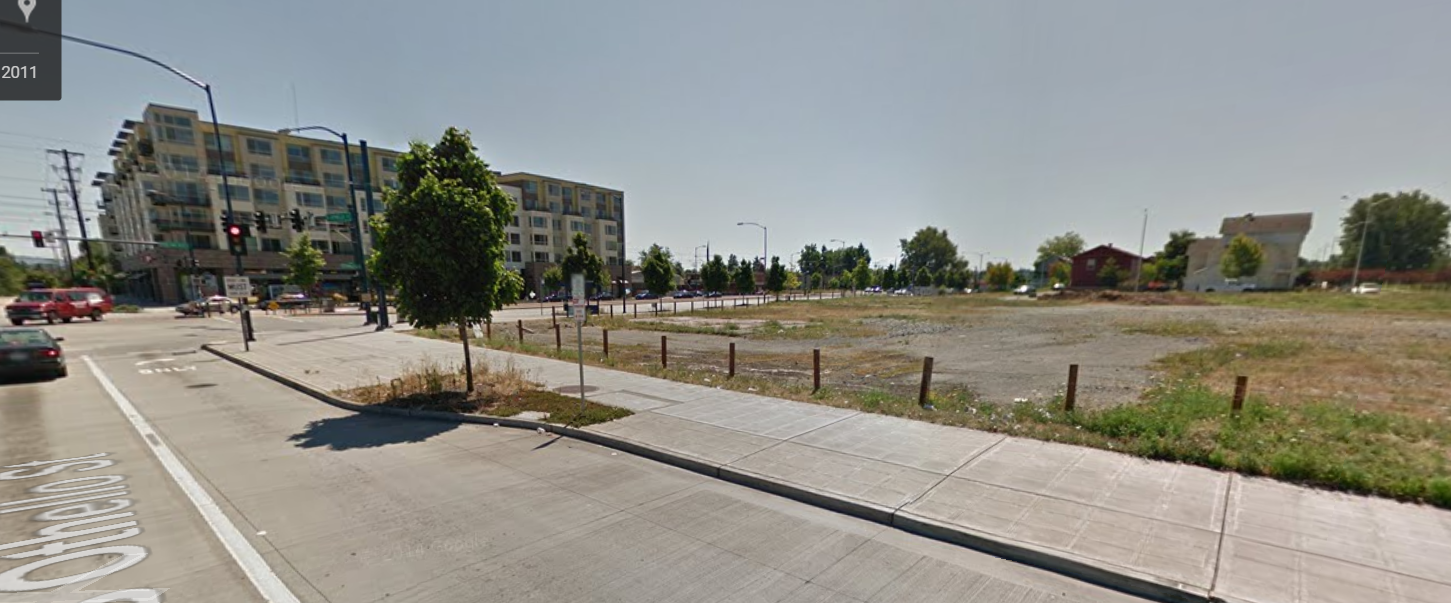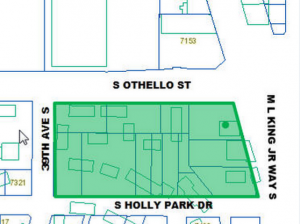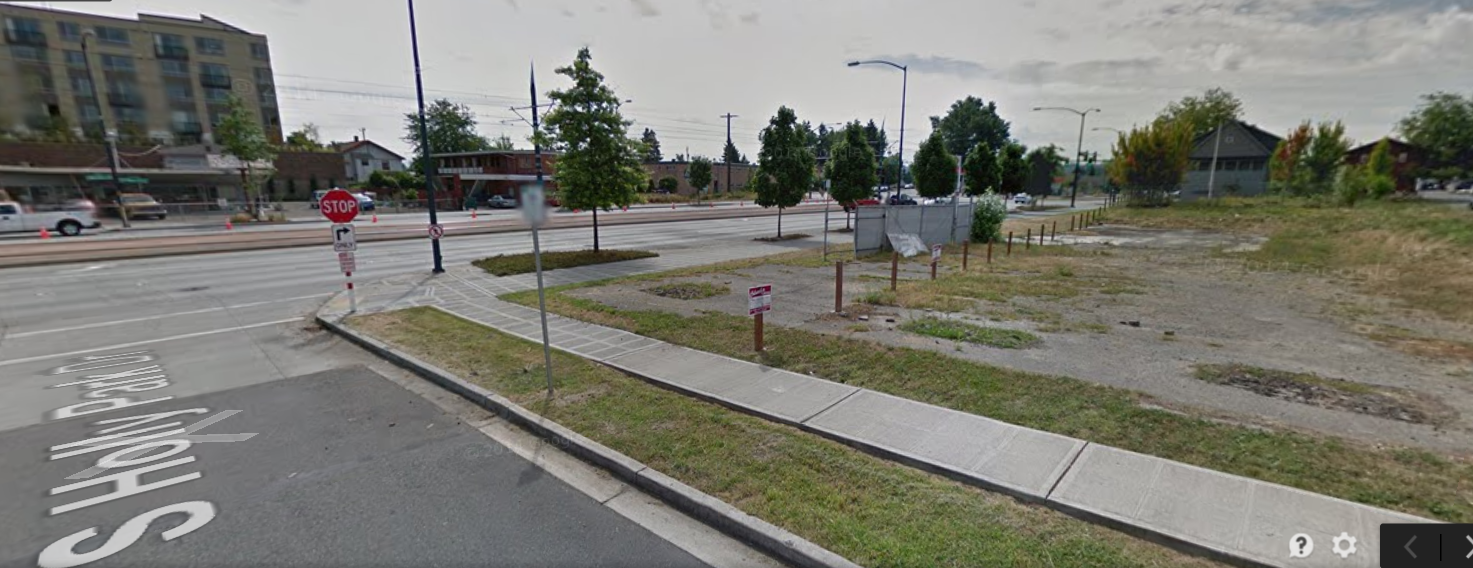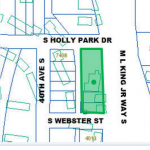
Path America’s “public market” mixed-use development plan has officially been submitted to the Seattle Department of Planning and Development (DPD). Hatched as a project on former Seattle Housing Authority property, the project proposal consists of two companion land use applications to construct three separate, but related buildings near the Othello light rail station. Combined, the projects would add 486 residential units and 439 parking spaces. The overall project has changed somewhat when we first reported on it in August 2014. At that time, 505 market rate apartments were planned.
The applicants plan to deploy a “wedding cake” approach to the scale and bulk of the three buildings. The tallest of these will be on the northern parcel with 7-story buildings while the southern lot will have a 4-story building that eases its way into the adjacent single-family neighborhood. As you can see in the image above, the gradient of the buildings is this traditional, progressive declination in building height and scale.
Seven-Story Mixed-Use Buildings: 7301 Martin Luther King Jr Way S (Project #3017470)

Siting at the corner of Martin Luther King Jr. Way and Othello Street, the empty lot above will be home to two, seven-story mixed-used structures. Together, the buildings will total 427 apartments and 6 street-level units as live/work spaces. Live/work units are fast-becoming a common addition to these type of projects. They’re flexible spaces that better address the street, but also reduce solid frontages of ground floor retail, which can often have a challenging time of being fully leased up. In addition to the residential components, the developer plans to have some ground floor retail and a central plaza space to support a farmers’ market.

The submitted land use application revises the total number of apartments downward from 435 to 427, but adds 5 additional live/work units (only 1 was planned originally). The total number of parking spaces is also reduced from the original 465 planned. But with 417 parking spaces slated for the site, the number called for is still obscene given the proximity of the development site and the Othello light rail station.
The immediate area around Othello Station is designated as Urban Village Overlay and the Pedestrian Incentive Zone, which means that the developer of this project isn’t actually required to build any parking. This is just more evidence that simply removing parking minimums doesn’t always reduce the construction of on-site parking, nor does it lead to fully transit-oriented development.
A Four-Story Residential Building: 7343 M L King Jr Way S (Project #301747)


Immediately south of the development site noted above, another land use application has been filed for by Path America. A 4-story building with 59 apartment units, ground floor retail, and 22 parking spaces is proposed on a site fronting Martin Luther King Jr. Way S. This project proposal shows fewer residential units that the early design review proposal, which originally called for 65 apartment units and 5 live/work units. As part of the project scale down, the applicants have proposed elimination of the live/work units and reduction of 6 parking spaces (originally planned for 28).
Like the project to the north, this development proposal falls under the same zoning requirements. But this project proposal has a much more appropriate parking ratio; less than half a parking space per unit (a ratio of 0.372 parking spaces per unit to be exact).
Take Action
If you are interested in making comments on the project proposals, the public comment period is open until May 6th, 2015. You can reach Bruce Rips, Project Planner, at bruce.rips@seattle.gov and DPD at PRC@seattle.gov. Given the location and context of the development, comments encouraging less parking as part of the projects would be particularly welcome.
It is also not unreasonable to contact the Seattle Housing Authority’s (SHA) Executive Director, Andrew Lofton, to let him know that future development sites owned and operated by the agency should make a priority for sustainable, equitable, and transit-oriented communities. It’s clear that SHA staff never prioritized development that would create a fully sustainable and equitable community in an area in deep need for such investments.

Owen Pickford
Owen is a solutions engineer for a software company. He has an amateur interest in urban policy, focusing on housing. His primary mode is a bicycle but isn't ashamed of riding down the hill and taking the bus back up. Feel free to tweet at him: @pickovven.

